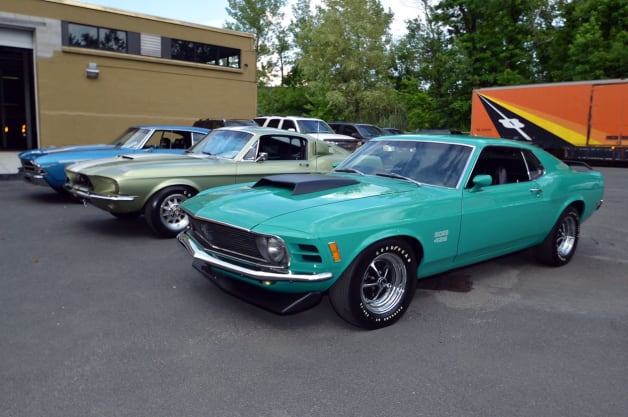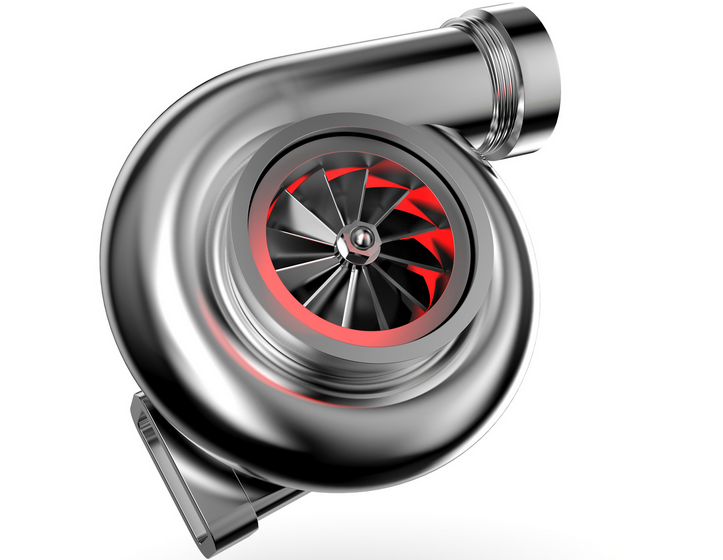5 awesome alternatives to Spotify and Pandora
When we think about music streaming services, we typically think of either the ones being offered by tech giants such as Google and Apple, or we think of the ever-popular third-party apps such as Spotify and Pandora. However, LifeHacker’s Alan Henry has put together a great list of music streaming services that he says you should use instead of the service you’re currently addicted to.
Read more here: Boy Genius Report
iWatch production delay confirmed by most solid source yet
Were you hoping to get an iWatch this fall? If so, then you might have to hold out until Christmas. AppleInsider points us to a new research note written by analyst Ming-Chi Kuo, who has a very solid track record with Apple rumors and who now says that Apple will start mass producing the iWatch in the second half of November and not in September as he previously reported.
Read more here: Boy Genius Report
The scariest USB hack of all-time is almost completely undetectable
When you plug a USB stick into your laptop, you probably aren’t too worried about it completely taking over your computer. However, Ars Technica reports that researchers at Security Research Labs in Berlin are scheduled to unveil a new exploit at the Black Hat conference in Las Vegas next week that will allow an infected USB stick to take over your computer and use it to execute malicious code.
Read more here: Boy Genius Report
PSA: This emoji stands for praying hands, not a high five
There seems to be some confusion about what certain emoji actually mean. Gawker brings us word that a TV station in Philadelphia described the emoji pictured above as being for a “high-five” of two hands slapping together, although it’s clearly supposed to be two hands held together in prayer.
Read more here: Boy Genius Report
‘Blood Muscle’ auction to sell impressive collection of ill-begotten classic cars
Filed under:
The old saying goes that if you can’t do the time, don’t do the crime. But being a criminal can involve more than just taking a trip to the big house; it can also mean losing possessions purchased from any ill-gotten gains. Still, one man’s loss is another’s gain, and if you’re in Lodi, NJ, on September 12, you stand the chance to buy some of the ultimate muscle cars from the US Marshals in what is being gruesomely nicknamed the Blood Muscle auction.
The grisly moniker was earned because all of the vehicles belonged to the president of a blood testing company who is facing prison time for alleged bribery, according to Hemmings. After all, they are muscle cars bought with actual blood money. The seven-vehicle collection includes some of the ultimate muscle cars ever made, and the original buyer clearly had an eye for rarity.
This cornucopia of V8 power includes a teal 1970 Ford Mustang Boss 429, a 1967 Shelby GT500 Mustang, an orange 1970 Plymouth Superbird, a 1970 Chevrolet Chevelle SS convertible and perhaps most prized of all – a trio of 1969 Yenko Chevys with a Chevelle, Nova and Camaro all represented. From the included photos, all of them look to be in fantastic condition.
A.J Willner Auctions, which is coordinating the sale, has authenticating documents for all seven vehicles on its website. “This is a live auction, all bidders will need to attend and bid in person with the required $10,000 cashier’s check as a deposit on them,” the company says about the event. If you can get past how the cars were purchased, there could be some bargains here.
‘Blood Muscle’ auction to sell impressive collection of ill-begotten classic cars
‘Blood Muscle’ auction to sell impressive collection of ill-begotten classic cars originally appeared on Autoblog Canada on Thu, 31 Jul 2014 14:00:00 EST. Please see our terms for use of feeds.
Permalink | Email this | Comments
Read more here: Ford News
It’s official: Apple is axing 200 Beats employees
Apple is cleaning house as the $3 billion acquisition of Beats Electronics approaches completion. Bloomberg reports that Apple has informed over 200 Beats employees that they will not be able to stay on with the company for the long term once the transaction has been finalized. According to the source, most of those jobs are in finance, HR and other areas where the two groups might overlap.
Read more here: Boy Genius Report
Tech Spotlight: Variable Geometry Turbochargers
[dropcap]W[/dropcap]ith the Green Revolution upon us, the turbocharger is making big waves. Whether it serves the purpose of making performance vehicles even more high performing, or just making our daily drivers more efficient. Turbocharged cars often experience ‘lag’ at lower speeds, due the time required for sufficient exhaust pressure to build up and spool the turbo. This has often been ameliorated by fitting multiple turbos, and several other emerging technologies, such as Volkswagen’s combined twincharger setup, or by electrically driven turbos (often used in racing but not yet on passenger cars).
Another option, though one not employed frequently, is the variable geometry turbocharger- also going by many names such as variable vane or variable nozzle. Variable geometry turbochargers work on the principle of aspect ratio adjustment, essentially varying the ratio of exhaust inlet width to turbine size. This can work in a variety of ways in a variety of designs, but they essentially achieve the same purpose- varying the aspect ratio of the turbine according to rpm levels and desired boost pressure. A turbo with a smaller aspect ratio will be able to spool up faster and deliver greater boost pressure at a lower rpm when the exhaust gas pressure turning the turbine is reduced, but it will not provide a satisfactory amount of airflow at higher rpm. A larger aspect ratio on a turbocharger will allow for sufficient airflow at higher rpm but will considerably increase lag due to its difficulty spooling up at lower rpm. It is for this reason that a sequential twin-turbocharger setup or variable sequential twin-turbocharger(biturbo) setup is often employed on larger performance engines or on engines where the boost-rpm range needs to be as wide as possible.
Porsche’s VGT technology used on its turbodiesel variant of the Cayenne. Vanes can be seen adjacent to the turbine.
So, variable geometry turbochargers combine the best features of a biturbo setup into one turbocharger and give an even greater degree of control. To illustrate the mechanics of this technology, visualize the turbine in the center surrounded by a series of vanes or flaps that will open or close. When the vanes are near closed, the exhaust gasses flow towards the turbine at a higher velocity, due to the reduced flow area, and are thus able to spin the turbine faster, compared with open vanes that would provide wider inlets and reduce exhaust velocity, thus not affecting the turbine with significant enough force. Effectively, the variable vanes lower the boost threshold in this instance, allowing a much larger turbine functionality at reduced rpm. As rpm rises and exhaust pressure increases, the vanes open, so as to allow all exhaust gasses contact with the turbine; should the vanes remain closed or near closed, insufficient space would be allowed and not all air could reach the turbine. The vanes are connected by rods to a disc which spins on a bearing to adjust their position as a unit. The disc/bearing system is controlled by the vane linkage and actuator which is synchronized by a separate ECU for the turbocharger.
Vehicles equipped with Variable Geometry Turbochargers(VGT) offer drastically increased boost pressure over a much wider rpm range. Graphically, the rpm vs. boost pressure plot for a VGT equipped engine is much flatter, with higher end range points than the corresponding plot of a traditional turbocharger. The overall result of VGT technology is a much lower boost threshold on an uncharacteristically large turbocharger.
So far, variable turbine geometry technology has found a home with larger commercial diesel engines. This is because the technology is presently much more feasible on diesel technology due to the fact that diesel engines produce much lower exhaust temperatures. VGTs have been employed on a very limited basis in gasoline engines, but they have experienced problems arising from the fact that vanes and the vane manipulation system is very vulnerable to damage caused by excessive exhaust heat. Advances in engineering and material science have allowed for better application of VGT technology in gasoline engines, though it’s still in its infancy.
Honda equipped the Legend with a VGT system starting in 1988, but it was only in production for two years. Chrysler equipped the Dodge Shelby SCX with a VGT around 1989, but this was a very limited production run. More recently, the Porsche 911 Turbo has employed VGT technology, beginning in 2007. A select few manufacturers do offer VGT systems available for the gasoline engine aftermarket. However, they come with few guarantees and have sometimes resulted in horror stories arising from heat damage.
As the turbocharging trend continues and these devices gain increasing preponderance in passenger cars, expect variable geometry turbocharger technology to be developed more and more. Perhaps VGT technology will become more at home in the performance arena, but it could still be useful in entry level passenger cars. Porsche seems to be leading the VGT charge in gasoline vehicles, so look towards Stuttgart for future developments.
The post Tech Spotlight: Variable Geometry Turbochargers appeared first on Engine Builder Magazine.
Read more here: Engine Builder Magazine
The Galaxy Alpha won’t be the smaller high-end Galaxy S5 version you want
After a series of leaked images suggested that Samsung’s upcoming Galaxy Alpha smartphone will only have metal on its edges, with SamMobile saying the phone will be somewhat of a high-end device, a new report from AllAboutSamsung brings in more details about the phone’s specs and features, confirming that the device won’t have the Galaxy S5’s key features.
Read more here: Boy Genius Report
Hot new HTC smartphone tackles two of the One (M8)’s biggest flaws
There’s a hot new HTC smartphone on the market, although you won’t be able to get it unless you live in Japan. Japanese carrier KDDI on Thursday revealed that it will start selling the new HTC J Butterfly starting in late August, and from the looks of it, it seems HTC has done its best to fix two of the biggest flaws with its flagship HTC One (M8).
Read more here: Boy Genius Report
Meet Timeful, the intelligent ‘Time Assistant’ that knows how to squeeze all your to-do chores in your busy calendar
Timeful is a new free iPhone application that wants to help users better manage their calendars and to-do lists at the same time. Timeful is an intelligent “Time Assistant” that relies on machine learning and behavioral science to automatically insert tasks in busy calendars, thus helping users get more things done without having to worry about scheduling.
Read more here: Boy Genius Report

























